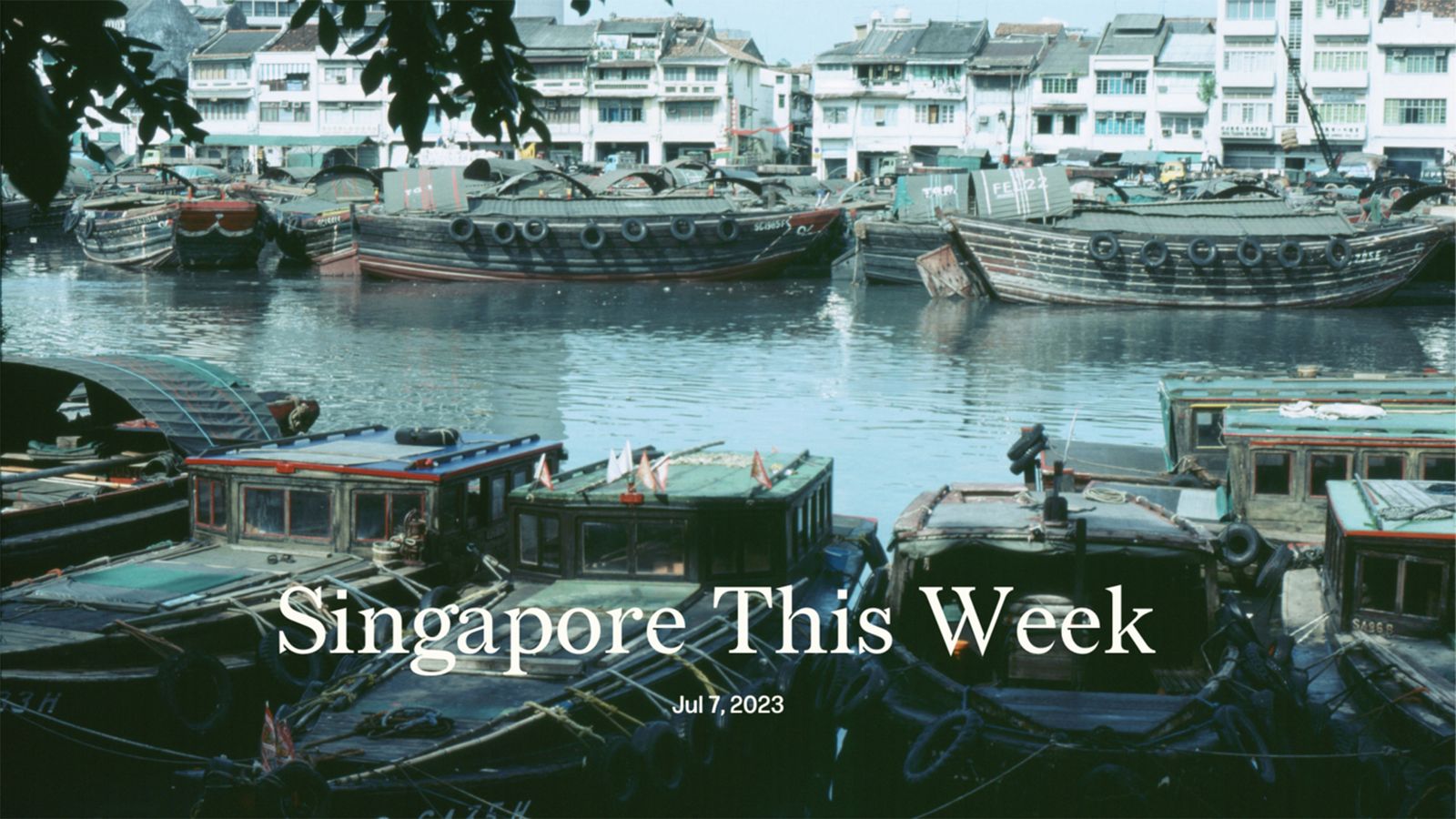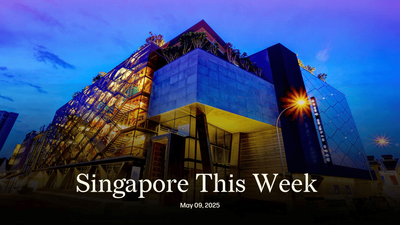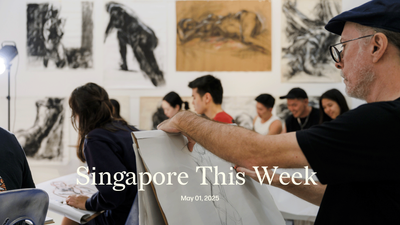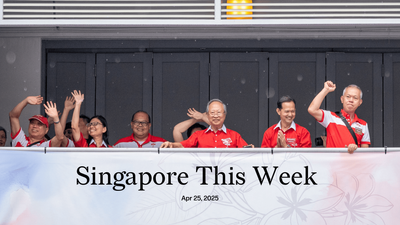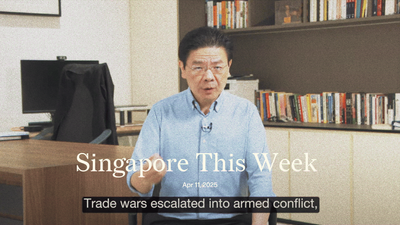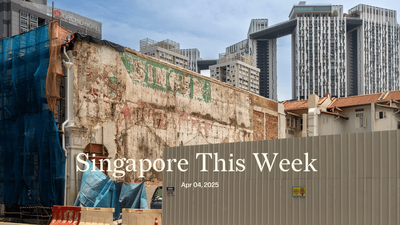Correction notice:
This article contains false statements of fact relating to the 26 and 31 Ridout Road matter, and the Parliamentary proceedings on 3 July.
This article also contains a false statement of fact relating to the geo-blocking of Charles Yeo’s Instagram post.
For the correct facts, click here: https://www.gov.sg/article/factually160723-b.
Politics: No corruption by the Rajahs of Ridout, but many questions unanswered
As expected, the government found no corruption in the Ridout Road bungalow leases by K Shanmugam, home affairs and law minister and Vivian Balakrishnan, foreign affairs minister. Yet the issue of corruption was a straw man—parliamentary opposition members never complained about it. The primary problems were around conflicts of interest and possible breaches of the Code of Conduct for Ministers (Code). Among other conflicts, it has emerged that Teo Chee Hean, senior minister, was both the informed and investigating officer. He should have “recused himself from the [ministerial] review, much less lead it,” as Harpreet Singh, a senior counsel, argued in a Jom editorial last week. The potential breach of the Code involved Shanmugam, whose ministry oversees the Singapore Land Authority (SLA), the agency that rents out the properties. The Code states that a minister “must scrupulously avoid any actual or apparent [emphasis ours] conflict of interest between his office and his private financial interests”. Teo’s pithy reply: “...it is more important to observe the spirit rather than just the letter of the Codes.” Ownself check ownself wins again. In Parliament, Balakrishnan and Shanmugam cried about the sacrifices they made moving into apparently decrepit bungalows. Stories of termites and financial losses, respectively, merited a sandiwara soundtrack. The bare facts are shocking, including over S$1m of taxpayer money spent on renovation works. Balakrishnan’s bungalow is almost 9,000 sq ft gross floor area on a property of almost 100,000 sq ft, equivalent to well over a football field. He claimed he needed so much space to accommodate three generations of family—he must pity the many Singaporeans who do so in tiny flats. Shanmugam’s property is about 250,000 sq ft, larger than three football fields, with a monthly rental of S$26,500—just over 10 cents per square foot. SLA in May said that Shanmugam had bid above the “guide rent” but has since changed its story: Shanmugam, through his agent, apparently offered below the guide rent, and SLA counter-offered with the exact guide rent, not a cent more, suggesting that the Singaporean coffers are represented by the most inept housing agent in history. (SLA did not respond to a request for comment.) Sure, the argument that conservation black-and-white bungalows are not easily comparable to other properties is valid. Yet, amid the frequent cries about land scarcity, why does Singapore need to conserve so many with so much land around them? With the Rajahs of Ridout sitting pretty in two of the biggest, society won’t get to have that deeper conversation.
Addendum to original post: Jom would like to clarify that it did not intend to nor did it make the following subject statements in the above article: (1) “Senior Minister Teo Chee Hean did not respond to questions concerning the issue of actual or apparent conflicts of interest and possible breach of the Code of Conduct for Ministers beyond replying that it is more important to observe the spirit rather than just the letter of the Code.”; (2) “SLA spent more than $1 million on the renovation for 26 Ridout Road and 31 Ridout Road because the Ministers were to be the tenants.”
Society: Did Instagram accede to a censorship request by the Rajah?
Instagram has seemingly geo-blocked (only in Singapore) a post by Charles Yeo, a former opposition politician with the Reform Party (RP). In the post, Yeo, who’s currently seeking political asylum in the UK, had alluded to crony capitalism in Singapore. He said that Livspace, whose regional head is Ravindran Shanmugam, son of K Shanmugam, may have benefited from involvement in renovation works at 26 Ridout Road (where his father lives). This claim generated enough controversy, including on forums such as Reddit and Hardwarezone (owned by SPH Media), that the elder Shanmugam was forced to debunk it in Parliament last week. What’s curious is that the government has not issued any correction order, as it so often does, under The Protection from Online Falsehoods and Manipulation Act 2019 (POFMA)—neither to Yeo nor to Kenneth Jeyaretnam, RP chief, who repeated the allegation on his blog. A correction order would have offered more transparency than a block, which is nefarious in its opacity. Instagram’s blocking notice said it “...complied with a legal request to restrict this content.” We don’t know if this request came from Shanmugam. What we do know is that Meta sometimes works hand-in-glove with autocratic governments in the region. “Meta reportedly maintains an internal list of Vietnamese Communist Party officials who should not be criticised on Facebook,” Alan Soon, co-founder of Splice Media, a consultancy, recently wrote, referencing a Washington Post article, which said the list was shaped by Vietnamese apparatchiks. “Posts criticising top officials have been taken down…” There’s no evidence that Meta has any similar arrangement with Singapore’s ruling People’s Action Party (PAP), whose leaders are regularly criticised on Facebook and Instagram. In response to a Jom query, Meta said that after careful review of a court order it received—in a similar process it conducts in every country—it determined it was legally required to restrict access to that bit of content. Still, this incident raises worrying questions about speech, censorship tools, and the rules of engagement in online discourse, particularly given inherent power dynamics (PAP politicians are far less likely to be penalised for potential falsehoods, as evidenced here). All this is particularly relevant ahead of a crucial general election, which must be called by 2025.
Addendum to original post: Jom would like to clarify that it did not intend to nor did it make the following subject statement in the above article: "The Government caused Instagram to geo-block a post by Charles Yeo."
Society: For better, for worse, for richer, for poorer, for getting paid less, much less
A growing share of women are out-earning their spouses—a little over one in four married couples—slowly but surely weakening the traditional notion that the man is a family’s primary breadwinner. The Straits Times (ST) found that in 2020, wives in 27.5 percent of dual-salary households were in a higher income group than their husbands, up from 19 percent in 2000. The proportion of husbands earning more than their wives fell from 56 percent to 47.8 percent in the same period. How has this affected husbands, who might grapple with conventional marital roles? A 36-year-old father of two, who went without a salary for three years after starting a charity, told ST: “As a guy, I wanted to pay the bills...The insecurity of being unable to provide is real…I felt guilt and shame.” Husbands who earn less might feel emasculated, leading to tension and resentment in the marriage and for some even divorce. Research has shown that men get increasingly uncomfortable when their wives’ salaries inch above 40 percent of household income, and can result in anxiety and depression. Not all husbands with lower incomes, however, experience an existential crisis. Terrence Tan earns three to four times less than his wife, Lim Mui Khim, but told ST “it doesn’t bother me.” Said Lim: “We see us as a team…If I am better at bringing home the income, then it is the role I will play.” Singapore’s adjusted gender pay gap (which compares like-for-like jobs) has narrowed from 8.8 percent in 2002 to 4.3 percent in 2020. The unadjusted pay gap (which doesn’t account for the nature of work) was 14.4 percent in 2020. (In Sweden, the world’s leader, it’s 10.5 percent.) Gender equality? Man, we’ve still got a way to go.
Food: Don’t tell us we’re good
Singapore’s 2023 Bib Gourmand list dropped last month—great news for the 19 new entrants (two restaurants and 17 hawker stalls), but for diners, not so much. They’re feeling a gnawing irritation at what this means for them, including longer queues, falling standards and higher prices, particularly at their favourite hawkers. The Bib Gourmand category was created by the Michelin Guide in 1997, and awards price-friendly establishments serving food that meets Michelin-level standards. Despite the usual pomp and circumstance of awards season within the F&B industry, cynics have asked whether Bib Gourmand might be overrated. Singaporeans love their local hawker cuisine with an almost insatiable passion. Imagine being told by inspectors parachuting in incognito what’s good or not. The audacity! An industry observer acknowledged that the Michelin Guide’s ratings of hawker fare are understandably controversial: “Anyone who has ever tried to voice an opinion on food…is bound to stir up debate in a country that is so madly passionate about food.” Food critic KF Seetoh doesn’t think the Guide improves the city-state’s food scene. He pointed out that almost all the Michelin recommendations are in the Makansutra food guide, which he founded and first wrote and published in 1998. “I don’t learn anything new,” Seetoh told Insider. “They should just stick to what they’re good at. Let Singaporeans judge our own food.” Singaporeans crave international accolades—until they hit our tummies.
Arts: SAMSKRITI festival debuts
Kalpavriksha Fine Arts is putting on a festival of Indian classical arts this August. “Mallari” opens the festival with an exploration of nadaswaram, a classical Carnatic wind instrument, through different eras. The production is also a collaboration between dancers from Kalpavriksha Fine Arts, Medasvi, Omkar, and Nanyang Academy of Fine Arts, drawing from traditions as diverse as bharatanatyam, mohiniattam, and ballet. The two other events in SAMSKRITI are “Kasi”, a dance performance inspired by the holy city of Varanasi which was previously staged in Covid-safe form at the Esplanade, and “Isai Darbar”, a performance from internationally-renowned Carnatic vocalist Abhishek Raghuram. He will be accompanied by HN Bhaskar on the violin and Patri Satish Kumar on the mridangam. The festival takes place over three days and each production will only be staged once. SAMSKRITI is on from August 4-6th at the School of the Arts. Early bird booking is valid until July 8th. More information is available on the Kalpavriksha website.
Arts: Wild Rice closes out its 2023 season
2023 has been a huge year for Wild Rice—they celebrated their 20th anniversary with the publication of a hefty hardcover book, held the Singapore premiere of their first opera “The Butterfly Lovers”, and staged a sold-out one-month run of one of their most popular plays to date, “Hotel”. (Jom’s review of “Hotel” will be in our print magazine later this year.) Closing the year on a high, the theatre company has just announced its final shows for the season. Poet Amanda Chong’s play “Psychobitch” is a one-woman show about gender dynamics and toxic relationships. It was developed under the mentorship of Haresh Sharma, as part of The Necessary Stage’s (TNS) Playwrights Cove playwriting programme and stars Sindhura Kalidas, a TNS associate artist for the 2023/2024 season. Joel Tan, who wrote the libretto for “The Butterfly Lovers”, is staging a new play, “G*d Is A Woman”. Taking its title from the Ariana Grande song, the play begins with a group of artists, frustrated with the conditions of art-making here, beginning a fake petition to have Grande’s Singaporean concert cancelled. The petition gains momentum among people who take it seriously, providing the perfect set-up for a political satire that takes on censorship and complaint culture. Finally, Wild Rice is restaging “Snow White & the Seven Dwarfs” as its annual year-end pantomime. First staged in 2008, this production will introduce a new cast including fresh face Nadya Zaheer in the titular role. Early bird discounts are available until July 12th. More information can be found on the Wild Rice website.
History weekly by Faris Joraimi
The last two remaining twakows—a type of squat, wide-bodied boat—in the Singapore River will be permanently removed and dismantled by August. A spokesman for “CQ @ Clarke Quay” (the current tacky brand-name for historic Clarke Quay) made the announcement last month. Twakows, from Teochew “tua-go” and Hokkien “tua-gor”, were the workhorses of our old entrepôt economy. As big ships carrying merchandise had to anchor in the harbour, small barges called “lighters” carried the goods between them and the godowns on the riverbank. Twakows were the dominant lighter from the late 19th century up until the 1980s. Often confused with tongkangs, the twakow is actually a unique Singaporean invention, developed by local Chinese using a Chinese hull design. The tongkang, on the other hand, according to maritime historian C A Gibson-Hill, is a Malay term for larger sailing barges used in the region’s inter-island trade. Yet, Gibson-Hill noted even back in 1952 (in an article cleverly titled “Tongkang and Lighter Matters”) that Singaporeans mistakenly referred to the motorised twakow as the “motor tongkang”. Following an old Chinese mariners’ custom, all twakows were painted with a pair of eyes on their bow, so the boat could see its way across the water. You’ll also find them painted on today’s water taxis that tourists ride for skyline views. Those are neither twakows nor tongkangs, but bumboats. Most twakows were removed by the 1980s, when the river was cleaned up and container ships became the international mode of cargo transport. New container terminals in Keppel and Pasir Panjang took over cargo-handling, rendering twakows obsolete. Those last two surviving ones, dating to 1968 and 1972, were used as bars and restaurants before deteriorating to precarious and unsafe states. With the standardisation of port infrastructure worldwide and the disappearance of such watercraft, it’s now more important to remember the diverse, centuries-old traditions of Asian nautical craftsmanship and technology that built Singapore.
Tech: Sustainable electrification
Seen more electric vehicles (EV) on the road recently? You probably don’t think as much about where all the used batteries end up. It’s estimated that 50m tonnes of e-waste are generated globally annually, which includes a wide range of discarded electronic products, with batteries being a substantial component. Batteries from these devices contain harmful elements that can leach into the environment if disposed of improperly, causing soil contamination and water pollution. This makes battery recycling businesses highly crucial as countries undergo electrification. By offering efficient recycling solutions, they can help mitigate the adverse environmental impacts of e-waste, ensure the valuable resources don’t go wasted, and contribute towards building a sustainable, circular economy. As the number of EVs surge, it’s imperative that Singapore has infrastructure in place to handle this anticipated volume of end-of-life batteries. This is where battery recycling businesses like NEU Battery Materials come into play. They contribute to the circular economy by retrieving precious metals from spent batteries that can be reused for new batteries, thus reducing the dependency on virgin materials. It’s unsurprising then that the Singapore government’s Deep Tech investment arm, SGInnovate and transport operator ComfortDelGro, among others, have invested US$3.7m (S$5m) in NEU Battery Materials given the company’s significant role in building this critical infrastructure for the EV ecosystem.
Tech: Nium is building the next generation of fintech unicorns out of Singapore
Amidst the tech downturn, Nium, a prominent real-time global payments company, inaugurated its new headquarters in Singapore at Capital Tower, where other notable financial services firms like GIC are located. The new hub will cater to clients across Africa, Asia Pacific and the Middle East. It will be managed by Pratik Gandhi, co-founder and COO, and Anupam Pahuja, executive vice president and general manager of Asia Pacific, Middle East and Africa. Pahuja’s vast experience in scaling global businesses will presumably help Nium in its bid to double its growth, following a year when the firm saw its global revenue increase by more than 2.5 times. Nium is also introducing various initiatives to nurture the regional fintech ecosystem. For instance, it plans to collaborate with public and private sectors to build a BizTech Centre of Excellence in Singapore. This centre aims to hire, train, mentor and develop people in technical and business skills. Additionally, Nium is extending its fintech accelerator programme, Bolt, to San Francisco, California. This expansion aims to offer Singaporean start-up founders resources such as facilities, funding, mentoring, and technology to bolster growth in the fintech space. The company has come a long way since starting out of a co-working space operated by its investor, Vertex Ventures. Nium’s success is not only an inspiration for other fledgling start-ups in Singapore, but also shows how having local champions can help younger start-ups expand regionally and globally.
If you enjoy Jom’s work, do get a paid subscription today to support independent journalism in Singapore.


